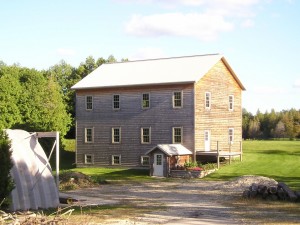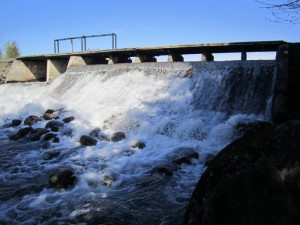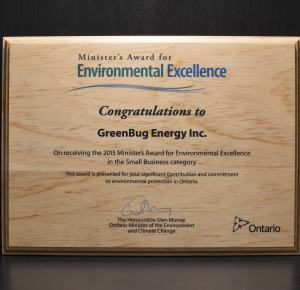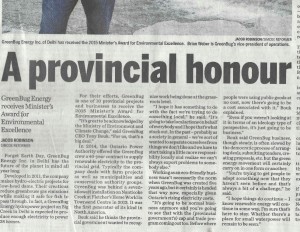Who We Are
micro hydro projects.

Site No. 2FC59 – 2017
Name: VanTol Weir
Maximum Output: 35 kW
Maximum Design Flow Capacity: 1.65 cubic meters per second
Design Head: 3.7 Meters

Site No. RI03801
Name: Natick Pond Dam
Watercourse: Pawtuxet River
Maximum Output: 360kw(estimated)

Site No. 2FC14 – 2015
Name: Dobson’s Dam
Watercourse: North Saugeen
Maximum Output: 60kw
Maximum Design Flow Capacity: 3.8 cms (cubic meters per second)
Design Head: 2.33 meters
RPM: 29
Est. annual output: 318,245 kwh’s
featured event.
Currently no events.
GreenBug Energy’s main focus is on site development of company owned sites or partially owned sites developed in partnership with others.
We do however also sell equipment and services to enable and help others wishing to develop their site themselves. Therefore we have made it possible for you to request a quote for an “exportable” Archimedes screw generator kit which includes everything you need except the site civil work.
But we are not just another Archimedes screw generator equipment seller or service provider or project developer.
We make micro hydro possible and financially attractive for the first time since our ancestors settled in North America and started using waterpower to power their homes and businesses.
There is a reason you haven’t see any micro hydro projects around you. And there’s a reason when you see a site where someone has attempted micro hydro that it is usually abandoned and incomplete.
The reason for this is only in a small way technology related. It’s true GreenBug’s Archimedes screw generator technology provides many advantages over other turbine types traditionally used for low head micro hydro sites. And yes, the Archimedes screw generator can operate on a lower head (as little as one meter) than other turbines. However, the only recent introduction of our Archimedes screw generator technology alone does not entirely explain the previous lack of micro hydro development.
Much of the reason lies in the complexity of the waterpower site development process, the many fields of expertise and knowledge requirements involved, and the nature of the industry available to assist with micro hydro site development.
Previously, in order to develop a micro hydro site a series of specialized consultants, engineers, contractors, would have to be hired for each issue or piece of the project development and you would have to coordinate and know how to use all of this information or hire someone for this also. You, the project developer would take all the risk even before knowing whether the project was feasible or not, and essentially your role consisted of holding out a bag of money.
And because each specialist only held and knew about their piece of the bigger project, it was very difficult to assemble all this information in way that would allow you to objectively determine the optimal installation size and specifications. As an example, we ourselves have hired engineers to assess a site and provide their recommendations on the system to install, just to see what work they do and what they provide. The result is usually a polished lengthy report that provides two or three system options in terms of size etc, with an estimated kWh production from each one, and rough costs, with no discussion of return on investment of each one. One of them has to result in the best rate or return, which one? They can’t tell you because they don’t have all the pieces of the puzzle to be able to tell you.
In addition there was no alignment of interests. You, the project developer wanted to constrain costs to ensure a financially profitable development, but the many contractors and consultants and service providers make money by performing services. We’re not suggesting anything unsavory here, we have a high degree of respect for what all of these professionals do, we’re just saying the objectives and motivations are not aligned.
This “consult-a-thon” combined with the inability of any party to objectively determine the most optimal installation specifications and estimate financials because of the dispersion of information is the reason why most micro hydro site owners did not attempt micro hydro development and gave up early in the process, and is also why those that did have the courage to proceed further usually gave up part way through the development process, many times after spending significant sums of money. We see these abandoned sites all the time.
Because of the relatively high cost of these services and the fixed or semi-fixed nature of these soft costs, they put a disproportionate burden on small projects. In other words, the amount of many of these costs don’t change much based on project size.
As a result, while in theory micro hydro project development was an opportunity, in reality, it really wasn’t.
To address this problem, we are trying to democratize micro hydro development to make it an opportunity accessible to anyone.
We’ve;
- Made it possible – You don’t have to have a big bag of money to develop your waterpower site anymore, you can partner with us, lease your site, and invest as much as you want.
- Aligned our interests with yours – As an investor in the projects we develop, our interests are perfectly aligned with yours as investor and site lessor. This is also why the lease payments to the site lessor are based on operating income and not gross income. We want everyone to be fully aligned with the same interests. If we make money everyone makes money, if we lose, we all lose.
- Reduced costs – We’ve reduced much of the up-front design costs by developing our own proprietary “WaterWatts” model, and we have vertically integrated into the design, manufacture and installation of systems as well as all approval processes to understand the current nature of existing processes in an effort to eliminate waste, streamline processes and reduce costs.
- Made it objective and not guess work – By vertically integrating and bringing everything critical in house, we have all the pieces of the puzzle, and all of those pieces are incorporated into our proprietary “WaterWatts” model. The model inputs are head and flow duration data, and the model solves to find the optimal screw configuration and size that will maximize the rate of return (IRR) on the project. The model considers approximately 2 billion different screw configurations, the cost of each, the revenues of each given the head and flow duration data for the specific site and the rate of return (IRR) of each screw configuration. It also produces Solidworks drawings for the chosen screw. This not only eliminates most of the soft costs but it ensures that the last drop of rate of return is captured.




